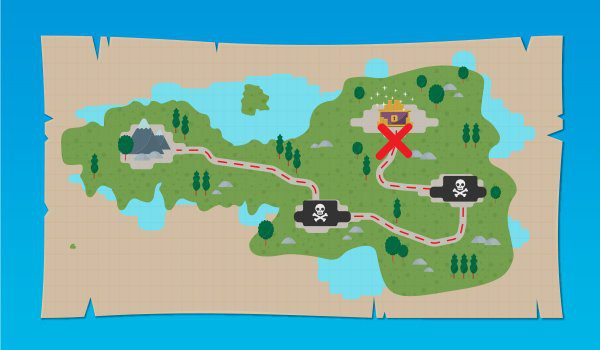As fans of our content may have already noticed, we talk a lot about enabling technology. A company whose charter is built upon combining humans + machines to deliver exception customer experience would naturally be fans of technology, right?
However, it’s not as simple as giving our clients technology tools. The philosophy of technology enablement is about so much more. Today, we’re here to walk you through it.
X Marks the Spot
With an eye to helping companies develop a new way to engage, acquire, and support customers, technology enablement starts with an understanding of the customer journey. To truly make transformative changes to customer lifecycle management practices, executives across all functional business areas need to understand the ease (or frictions) that customers encounter at every touchpoint. We’ve discussed the importance of customer journey mapping before, but we really cannot stress it enough. This exercise will expose any and all areas for improvement in any combination of people, processes, and (especially) technologies. As these opportunities are exposed, the full spectrum look at the customer journey enables us to work with companies to avoid merely taping over the issues with point solutions, but rather bringing a unified solution that unites silos around common strategic objectives. In layman’s terms, the journey map helps us get everyone in your organization on the same page (and to realize that their goals are aligned) so there will no longer be an all-out battle to get budget.
Being an Enabler is Good in This Case
Once you know the key areas for improvement, the process for change can begin. It’s never as simple as throwing a tool at the problem and BOOM it’s fixed; as mentioned above, technology enablement is all about maintaining the right balance between people, processes, and technologies. Our industry expertise, and the output from the journey mapping session, will help everyone answer the important questions when it comes to change:
- How will implementing something new affect our current state?
- What are the potential knock-on effects?
- How does the process need to change to account for the new solutions?
- What is the role of my current human labor force?
Working with key stakeholders allows for these questions to be answered simultaneously across the entire customer lifecycle, from sales to support of offboarding, etc. More often than not, the gaps in the customer journey require two or more tech tools to create solutions, thereby changing the nature of the work being done as well as the knowledge gained on the back end. That’s the key though: enabling technology allows for companies to have more knowledge about what’s going on inside of their contact center and across their business; it allows for simple, repeatable interactions to be automated; it allows for a smarter allocation of resources. Ultimately, it allows for businesses to create the customer experience both they and their customers want.
What Happens to Humans?
With top interaction dispositions and/or frequent QA problems being handled by AI and automation, what becomes of the role of the people on the front lines of your customer engagement initiatives? In truth, their capabilities are enhanced and augmented by these tools. The data acquired and processed through these automated processes is passed to the agents, enabling them to work at a higher level for escalations that require the human touch. This will change the nature of hiring for customer facing positions, as the need to be able to work with multiple systems, even as they are unified on one dashboard, and process that information in the correct way will be as paramount as the soft skills of empathy, attitude, etc.
Changes will be occurring across the customer lifecycle, so it is important to remember that technology enablement is not only transforming support, but also sales. Enabling technology on the sales side will make the lives of people on the support side much easier and based on the results of the customer journey map, might eliminate some of their most frequent inquiries. Even with all of the changes going on behind the scenes, the customer will still be reaping the rewards of smarter, simpler interactions.
The Choice is Yours
Look, we know that there has been a way to do things that has worked for the past two to three decades and has created some of the biggest customer experience organizations in the world.
Those times are over.
The pace of change across the technology and customer landscape means that there is no time to wait to implement customer journey mapping workshops, deploy technology for customer and agent use, or take a step back and admire all the work that has been done in the past. Customer expectations are set at an all-time high, and it’s not enough to be better than your competitors anymore. The best thing about technology enablement with Humach is that it isn’t a 6-month process restricted by an IT roadmap. We support you as you want to move quickly and get things done, and in fact we encourage it. We all know your customers won’t wait around for you to get your act together if they have issues with their interactions with you; they’ll find someone else. By knowing your business inside and out, we can work together to deliver the experiences that you and your customers have always wanted.



